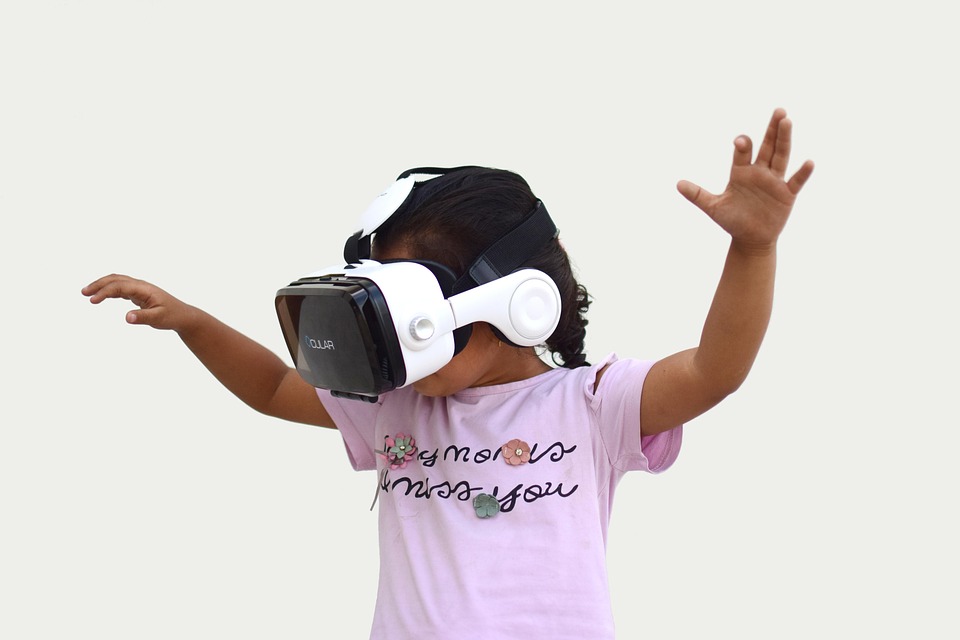Imagine stepping into a virtual world where you can dissect a frog without the smell, explore the surface of Mars without a rocket, or walk through ancient Rome while chatting with a holographic Julius Caesar. Sounds like science fiction, right? Well, welcome to the world of immersive learning through Virtual Reality (VR). This technology is not just a gimmick; it’s reshaping how we educate and learn in profound ways. Let’s dive into six transformative ways immersive learning VR is changing education today.
Contents
1. Enhanced Engagement Through Immersive Experiences
The Power of Presence
When students don VR headsets, they’re not just watching a video; they’re in the experience. This sense of presence can dramatically increase engagement levels. A study conducted by the University of Maryland found that students who used VR for learning scored significantly higher on assessments compared to their peers who learned through traditional methods (Jensen & Konradsen, 2018).
Real-World Applications
Take a look at how schools are using VR to teach complex subjects. For instance, medical students can simulate surgeries, allowing them to practice without the risk of harming real patients. This hands-on approach not only makes learning more engaging but also more effective.
Pros:
- Increased motivation and interest.
- Better retention of information.
Cons:
- Requires investment in technology.
- Can be overwhelming for some students.
2. Personalized Learning Experiences
Tailored to Individual Needs
One size doesn’t fit all in education. With immersive learning VR, educators can tailor experiences to meet individual student needs. For example, VR platforms can adapt scenarios based on a learner’s pace and understanding, providing customized feedback and challenges.
Case Study: The Virtual Reality Classroom
Take the case of a high school in California that implemented VR for its science curriculum. The platform allowed students to explore the human body at their own pace. Some students zoomed in on specific organs, while others explored systems in-depth, all while receiving personalized quizzes based on their interactions.
Pros:
- Supports diverse learning styles.
- Encourages self-directed learning.
Cons:
- Requires time to develop personalized content.
- May not address all learning gaps effectively.
3. Bridging the Gap in Accessibility
Equal Opportunities for All
One of the most exciting aspects of immersive learning VR is its potential to bridge accessibility gaps. Students with disabilities can experience environments and scenarios that would otherwise be difficult or impossible for them to access.
Example: Beyond Physical Limitations
Imagine a student with mobility issues who wants to explore a museum. With VR, they can virtually walk through galleries and interact with exhibits without physical barriers. This not only fosters inclusivity but also enriches the learning experience for all students.
Pros:
- Provides equal learning opportunities.
- Reduces physical barriers to education.
Cons:
- Requires high-quality content that addresses diverse needs.
- Potential technical issues can hinder accessibility.
4. Fostering Collaboration and Social Learning
Learning Together, Apart
VR isn’t just about solo experiences; it can foster collaboration among students, even if they’re miles apart. Virtual classrooms allow students to work together on projects, share ideas, and solve problems in real-time.
Case Study: Global Classroom Initiatives
Consider the Global Virtual Classroom initiative, where students from different countries collaborate on environmental science projects in a shared VR space. This not only teaches them about the subject matter but also about teamwork and cultural exchange.
Pros:
- Builds communication and teamwork skills.
- Encourages global awareness and understanding.
Cons:
- Requires robust internet connectivity.
- May lead to distractions in a virtual environment.
5. Simulating Real-World Scenarios
Preparing for the Future
One of the most powerful uses of VR in education is its ability to simulate real-world scenarios. This is particularly valuable in vocational training and higher education, where practical experience is crucial.
Example: Flight Simulators
Flight schools have long used simulators to train pilots, but now VR is taking it to the next level. Students can practice flying in various weather conditions, emergency situations, and even during night flights—all without leaving the ground. This immersive learning prepares them far better than traditional classroom instruction alone.
Pros:
- Provides safe environments for high-stakes training.
- Allows for repeated practice without real-world consequences.
Cons:
- High development costs for realistic simulations.
- May not fully replicate the nuances of real-world experiences.
6. Gamification of Learning
Making Learning Fun
Gamification is a buzzword in education, and VR takes it to new heights. By incorporating game-like elements into lessons, VR can make learning more enjoyable and engaging.
Example: Language Learning Through VR
Imagine learning a new language by immersing yourself in a virtual city where you must interact with locals, order food, and navigate public transport—all in the target language. This kind of gamified approach not only makes learning fun but also reinforces language skills through practical use.
Pros:
- Increases motivation and participation.
- Provides immediate feedback and rewards.
Cons:
- Can be distracting if not well-designed.
- Risk of focusing more on gameplay than learning objectives.
FAQs
Q1: What age groups can benefit from immersive learning VR?
A: Immersive learning VR can benefit all age groups, from elementary students to adult learners, as it can be tailored to various educational levels and subjects.
Q2: Is VR technology expensive for schools?
A: While initial setup costs can be high, many schools find that the long-term benefits and potential for improved learning outcomes justify the investment.
Q3: How do teachers integrate VR into their lessons?
A: Teachers can integrate VR by using existing platforms or creating custom experiences that align with their curriculum, often starting with small pilot programs.
Q4: Are there any risks associated with using VR in education?
A: Yes, potential risks include motion sickness for some users, the need for supervision, and ensuring that content is age-appropriate and educationally sound.
Conclusion: The Future of Education is Immersive
As we look ahead, it’s clear that immersive learning VR is not just a passing trend; it’s a powerful tool that can transform education. From enhancing engagement to providing personalized experiences, the potential benefits are enormous. However, it’s essential to approach this technology with a critical eye, considering the challenges and limitations that come with it.
As educators, students, and parents, we must advocate for thoughtful integration of VR in classrooms. After all, the future of education is not just about what we learn, but how we learn. And in a world where technology continues to evolve, immersive learning VR might just be the key to unlocking new pathways for knowledge and understanding.
References
- Jensen, L. & Konradsen, F. (2018). “A review of the effectiveness of virtual reality in education.” Educational Technology & Society, 21(1), 115-127. Link
- “Global Virtual Classroom.” (2021). Edutopia. Link
- “The Future of Learning: Immersive Learning and the Role of VR.” (2020). Harvard Business Review. Link








